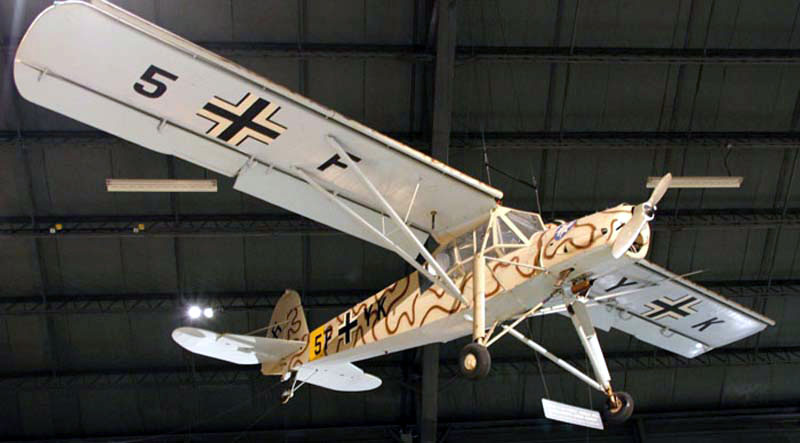|
Gerhard Fieseler Werke
The
Gerhard Fieseler Werke
was a German
aircraft
manufacturer of the 1930s and 40s.
The company is remembered mostly for
its military aircraft built for the
Luftwaffe during the Second World
War.
The firm was founded on
April 1, 1930 as
Fieseler Flugzeugbau
in Kassel by World War I
flying ace and aerobatic
champion Gerhard Fieseler.
Fieseler had been a manager
for the Raab-Katzenstein,
but when this company went
bankrupt, Fieseler bought a
sailplane factory in Kassel
and quickly turned it to
building sports planes. At
the same time, Fieseler
still custom-built
sailplanes for some of
Germany's most prominent
designers and pilots,
including Wolf Hirth's
"Musterle" and Robert
Kronfeld's "Wien" and
"Austria" (for many years
the largest sailplane ever
built).
In 1934, the company
achieved prominence when
Fieseler won the World
Aerobatics Championship in
an aircraft his company had
built, the F2 Tiger. This
was followed by the highly
successful F5, generally
regarded as a classic among
sports planes. Even greater
success was to follow in
1936 when an aircraft of
Fieseler's own design won a
tender over aircraft from
both Messerschmitt and
Siebel for a new STOL
observation and liaison
aircraft for the Luftwaffe.
Designated the Fieseler Fi
156
Storch
(Stork), the company would
produce over 3,000 during
World War II. In 1939 the
company name changed to the
Gerhard Fieseler Werke.
Fieseler's other wartime
production would largely
consist of building other
firms' aircraft under
licence, including the
Messerschmitt Bf 109 and
Focke-Wulf Fw 190. In 1941
however, a Fieseler project
for an unpiloted flying bomb
attracted the attention of
the RLM (Reichsluftfahrtministerium
- "Reich Aviation
Ministry"). This went into
production as the Fieseler
FZG-76 (flakzielgerät,
antiaircraft target), better
known as the V-1.
The
Fieseler factory was the
target of many Allied air
raids, but continued
production throughout the
war. Following the War, part
of the factory continued in
business for a few years,
producing automotive
components. Its most famous
products, the Storch and the
V1, continued to be produced
by foreign companies.
Source:
Wikipedia
|

